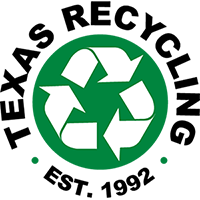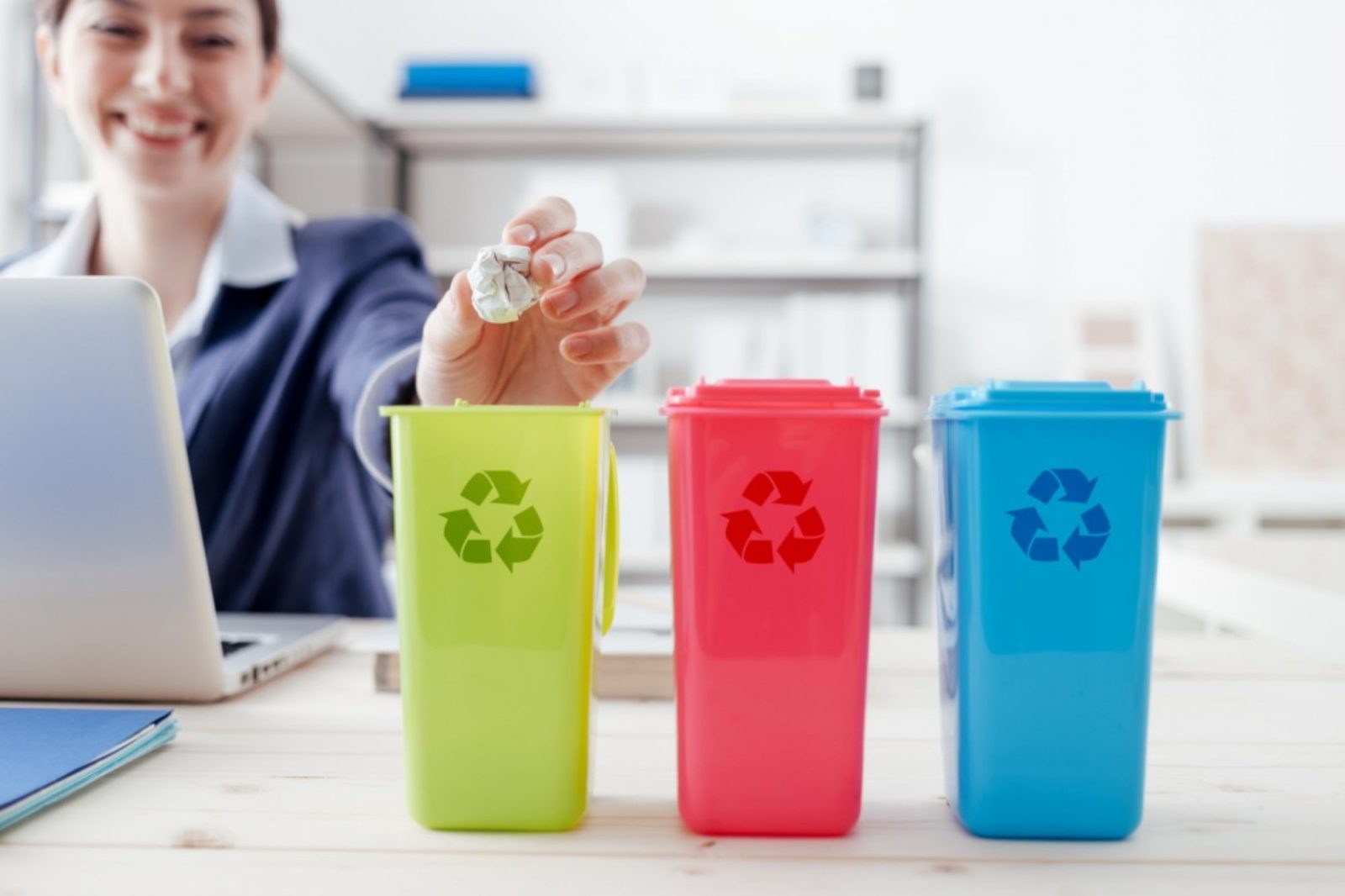For many companies, the biggest obstacle to recycling and waste reduction in the workplace is the lack of a plan. Most experts agree that starting off with some simple measures to reduce, reuse and recycle materials is usually the best approach. Here are five simple things your business can do to get the ball rolling.
1) Use Recycled Paper
In 1997 Frederick Wilfrid Lancaster originated the idea of the “paperless society” —a world in which books, letters, business documents, etc. would be replaced by electronic communications and storage.
While we’re a long way away from making this a reality, there are things you can do to reduce and recycle paper waste in the workplace. If your business can’t go paperless, you should consider buying recycled paper from local suppliers. This can help reduce the number of trees and energy and greenhouse gases created by the production of new paper.
Setting your office printers to print on both sides can also help reduce the amount of waste paper your business produces.
Using scrap paper instead of sticky notepads and reusing file folders are also good ways to reduce paper waste.
Fact: Did you know that the average American office worker uses 10,000 sheets of copy paper annually? Recycling 1 ton of paper saves approximately 17 trees, 7,000 gallons of water, two barrels of oil and three cubic yards of landfill space.
2) Reduce Packaging Waste
For many manufacturing businesses, industrial companies and fulfillment centers, packaging generates a huge amount of waste. When shipping items to customers or between offices, be sure to pack cardboard shipping boxes as densely as possible. Use recyclable paper or cardboard padding materials instead of polyethylene bubble wrap or polystyrene packing peanuts.
When transporting materials from office to office, consider using reusable containers like Rent-a-Green-Box or other zero waste containers instead of cardboard boxes.
Click here to learn more about environmentally-friendly packing materials.
Click here to locate bubble wrap recycling centers throughout the U.S.
Fact: 50% of the plastic we use, we use just once and throw away. We currently recover only five percent of the plastics we produce. The average American throws away approximately 185 pounds of plastic per year.
3) Reduce Energy Consumption
Computers, copiers, and other office machines are essential for most businesses. They also consume a tremendous amount of energy and “vampire power” a.k.a. “phantom load” accounts for much of that consumption. Vampire power is energy that electronic devices use even when they are turned off or in standby mode.
Although completely eliminating vampire power consumption isn’t possible in most workplace environments, there are things you can do to reduce it.
For starters, you can adjust power settings for all your office electronics to optimize battery usage and hibernate during periods of inactivity.
Electronics that are used infrequently can be unplugged to reduce vampire power consumption. Plugging multiple devices into a power strip/surge protector allows you to turn them off with the flip of a single switch. Power strips that feature motion detectors and programmable timers and other energy saving technologies make it even easier to control your energy usage.
Click here to see typical standby power consumption data for a variety of electronic devices.
Fact: A third of a PC’s energy is used by the monitor. A PC monitor left on overnight can waste enough electricity to laser print over 500 pages. Reducing your PC monitor brightness from 100% to 70% can save up to 20% of the energy the monitor uses.
4) Reduce Break Room Waste
For many businesses, employee break rooms are a major source of landfill waste. Here are some easy ways to alleviate the problem.
For starters, your breakroom should be equipped with separate, clearly-labeled containers for recyclables and trash.
Investing in durable, reusable cups, drinking glasses, plates, and eating utensils is a great way to reduce waste and cut costs.
While plastic shopping bags are convenient, they’re also a major contributor to landfill waste. Be sure to encourage employees to reuse them when possible, and recycle them when they’ve outlived their usefulness.
Instead of bottled water, you might want to consider installing a reverse osmosis water filter to help reduce the amount of waste your employees produce.
Fact: Americans purchase approximately 29 billion water bottles annually, and only one in six is recycled, and U.S. landfills contain about two million tons of discarded water bottles.
5) Work with a Local Recycling Company
Once you’ve committed to recycling your workplace waste, the next step is choosing the right recycling company to meet your specific needs.
For smaller businesses, dropping off your recycled materials at a recycling center is a great way to not only recycle and help mother Earth, but also generate a bit of revenue. Company recycling is an easy way to join together and earn extra cash for your next office party or staff lunch!
Larger commercial or industrial companies that meet weight/volume, storage and pick up requirements, and certain specifications of recyclable materials such as paper, cardboard, or metal, may be eligible for commercial recycling services. Recycling plants that offer this service typically provide you with convenient, scheduled pickups of your recycled materials at your location provided you meet certain requirements to qualify.
Recycling companies that offer commercial pick up programs can also provide recycling bins for paper, cardboard, aluminum cans, scrap metals, and other materials to those industrial accounts who qualify. Some also provide industry-compliant and NAID-certified information destruction services for E-waste and sensitive business documents. If you’re searching for ‘scrap yards near me,’ these companies can be a valuable resource for managing and recycling your scrap materials efficiently. Others also partner with or can recommend shredding companies, like Action Shred of Texas, who securely destroy documents and other types of information and products.
What is a Zero Waste Plan?
In 2013 the City of Dallas initiated a Zero Waste Plan. The goal is to divert 40% of all recyclable and reusable materials from the city’s landfills by 2020 and generate no landfill waste by 2040. According to an August 2016 Dallas Morning News article the city’s “diversion rate” was at 21%. This is among the lowest of any major Texas city according to the Sanitation Services Department.
As one of the leading recycling companies in the Dallas and Fort Worth area, Texas Recycling is committed to heightening awareness of the many benefits recycling can have for individuals, municipalities, organizations and businesses of all sizes.
Call Texas Recycling at 214-357-0262 or visit our website for more information on reducing waste in the workplace or to see if your company’s recycling volume qualifies for a commercial account.

